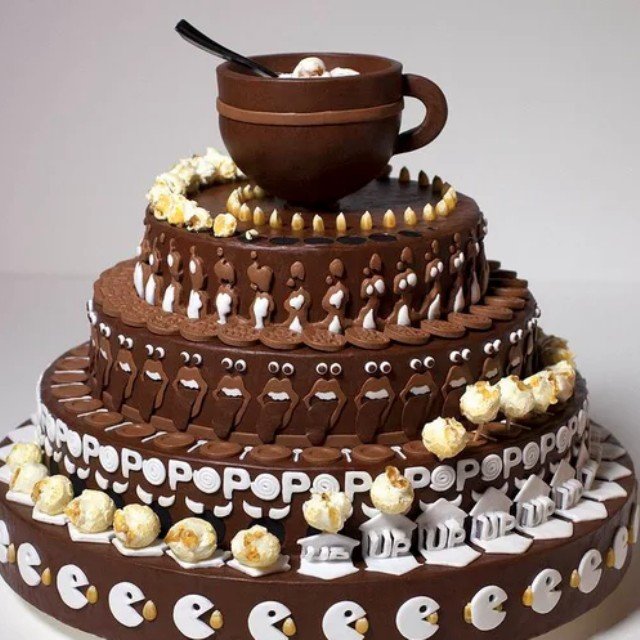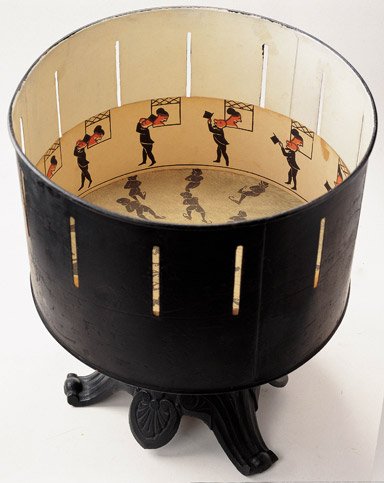Animated cakes and turn tables (the art of zoetrope animation)

Above is a still taken from the animated film Melting POP by animator, Alexandre DUBOSC
I love seeing animators implement traditional techniques in innovative ways. In this blogpost I am going to explain a little about what a zoetrope is, how it works, and show a few examples of how talented animators have taken the principles and use them to create new and engaging pieces.
What's a Zoetrope?
A zoetrope was one of the earliest methods of displaying animation before film was invented. A zoetrope is a device that shows a series of images quicker than your eye can register but slow enough to see that there is a clear sequence. This creates an optical illusion that allows the viewer to see multiple frames as a looping moving image. This is what all animation is based upon. A series of images being placed and replaced so quickly that it creates the illusion of movement. The first contraption known as a 'zoetrope' was marketed in the eighteen hundreds but over five thousand years ago various ceramic bowls 'earthenware bowls' dipicted a series of images that when turned created the illusion of movment. These are seen as the predecessor of the zoetrope.

The above photograph was taken by the Rahmim.koc Museum from their collection
How do zoetropes work?
A zoetrope is made up of a cylinder with evenly spaced out slits cut vertically into the sides mounted on a wheel that enables you to spin the cylinder smoothly. Inside the cylinder is a band that consists of a series a drawings or models. When the cylinder is spun you look through the slits into the centre of the cylinder. Be sure to keep your attention on the same slit. The slits are there to focus your eye on what looks like a sigular image coming to life. Without the slits it can appear blurry.
Since zoetropes have been created a series of other contraptions where invented before film such as the praxinoscope which replaces the slits with an inner circle of mirrors.
Here are a few examples of the principals of the zoetrope being beautifully used by animator Alexandre Dubosc for a series of animated cakes:
Alexandre Dubosc is a French animator who creates beautiful zoetrope animations by designing and building incredibly detailed cakes that have a looping animated action sequence that plays out when rotated.
The Caketrope of BURTON's Team © Alexandre DUBOSC
Melting POP © Alexandre DUBOSC
Alimation © Alexandre DUBOSC
Below you will see examples of Jim LeFevre's work in which he uses a turntable to create the illusion of movement in his characters. Jim Le Fevre was a huge inspiation to me whilst I was studying at University and I often visited links to his work:
The Phonotrope (formerly the Phonographantasmascope)
For both Alexander Dubosc and Jim Le Fevre's work the slits are not needed as the film breaks the movement up in to frames.
I hope you enjoy watching these pieces as much as I did.
If you would like to hear about any other animation techniques please leave a comment as I will be posting more techniques up in the future.
Thank you,
Charlotte :)
I remember making a zoetrope when i was in school, it was one of the few times I paid attention lol.
I love Alexander Dubosc's work I'll have to look int Jim Le Fevre's some more.
It's lovely stuff. Here is a link to some more of this style of work on his site: http://www.jimlefevre.com/?skill-type=phonotrope, I believe there is a making of on there also. I wish I got to make one when I was at school.
Thanks for the link charlotte.